Tree Health Blog
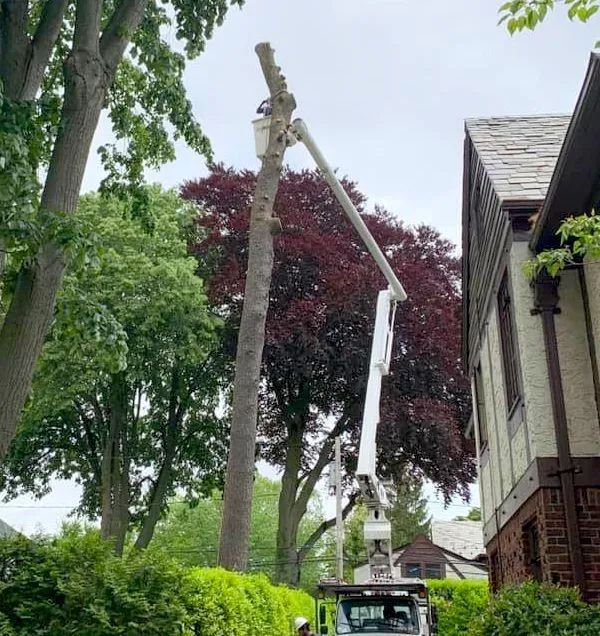
Tree removal may seem like a straightforward task, but in reality, it’s one of the more dangerous home projects you can attempt without the proper training or equipment. Certified arborists are experts in safely removing trees while protecting surrounding property. At Tree Health, our local ISA-certified arborists provide expert tree removal in the greater Hicksville, NY area. Here are four important reasons why hiring a certified arborist for tree removal is the smarter and safer choice. Safety Is Always the Top Priority Tree removal can be extremely hazardous, especially when large trees are near power lines, structures, or fences. Certified arborists are trained to assess each situation and plan removals in a way that minimizes risk. They use specialized equipment, proper rigging techniques, and safety gear to control each stage of the process. Without that expertise, even a small miscalculation can cause branches or trunks to fall unpredictably, putting you and your property in danger. Proper Equipment and Techniques Certified arborists have access to professional-grade tools and machinery designed for safe and efficient tree removal. From various chainsaws to climbing gear to stump grinders, they use equipment that most homeowners simply don’t have. Just as importantly, they know how to use these tools correctly to avoid accidents and achieve precise results. Protecting Your Property Improper tree removal can easily lead to damage to your home, vehicles, or landscaping. Arborists understand how to manage the direction of a tree’s fall and prevent harm to surrounding structures. They also take steps to minimize ground disturbance, root damage, and debris spread. What may look like a simple backyard project can quickly turn into a costly repair if a tree falls in the wrong direction. Efficient Cleanup and Disposal Removing a tree is only part of the job. The cleanup and disposal process can be labor-intensive and time-consuming, especially if large amounts of wood and debris are involved. Certified arborists handle everything from cutting and hauling to stump grinding and site cleanup, leaving your property safe, tidy, and ready for use. Tree Removal in Hicksville, NY When you need tree services in Hicksville and the surrounding area, contact Tree Health at 516-268-3745 . Our local ISA-certified arborists can expertly handle the job. Feel free to give us a call to arrange an arborist estimate in Hicksville, NY!
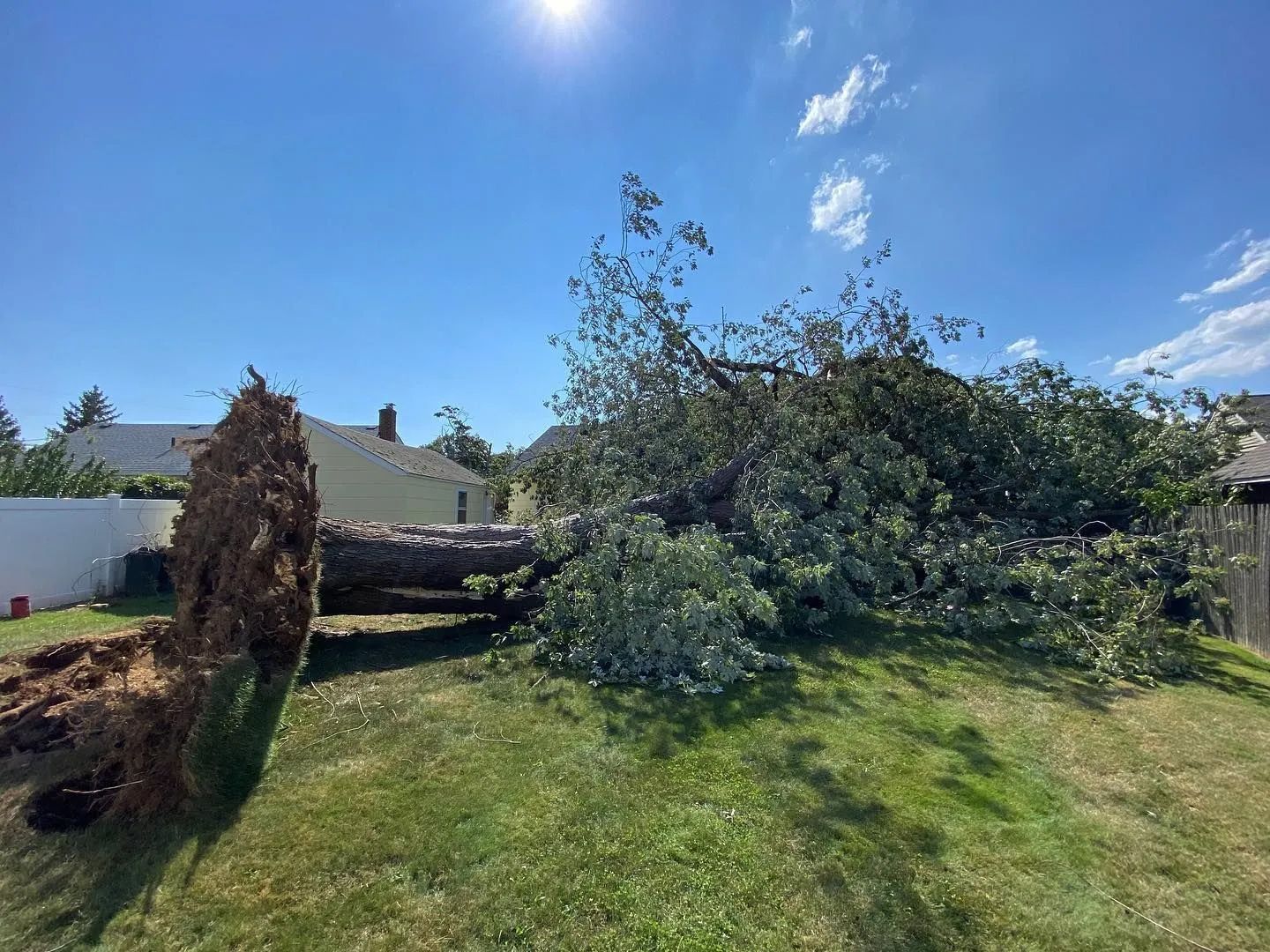
Big trees can pose serious dangers if they become unstable. A large tree at risk of falling can damage buildings, vehicles, and power lines, and can potentially cause serious injuries. While trees often show early warning signs of decline or instability, these symptoms are sometimes overlooked until it’s too late. At Tree Health, our local ISA-certified arborists provide hazardous tree identification and removal in the greater Hicksville, NY area. Here are four warning signs that a big tree is at heightened risk of toppling over. Leaning That Appears to Be Increasing Not all leaning trees are dangerous, but when the angle of the lean becomes more pronounced over time, it is often a sign of root instability. A sudden change in posture is especially concerning, as it suggests the tree may no longer have adequate anchoring below the surface. Leaning toward a building, driveway, or frequently used area increases the level of risk and calls for immediate attention. Splits in the Trunk A healthy trunk provides strength and stability to the entire tree. When cracks or splits develop, it is a sign that the tree’s structural integrity has been compromised. Large or deep cracks may indicate internal decay or weakness that could cause the trunk to fail, especially during high winds. If you notice this kind of damage, it’s essential to have an arborist assess the tree’s condition right away. Root Damage or Decay Roots are the unseen foundation that holds a tree upright. Damage from construction or soil erosion can weaken them significantly. Signs such as exposed roots, fungal growth at the base, or soft, spongy ground near the trunk often indicate root decay. Once roots are compromised, the tree becomes far more susceptible to falling without warning. Fungal Growth and Rot in the Trunk Fungus growing on the trunk or around the base is a warning sign of decay. When internal wood begins to rot, the tree gradually loses its ability to support its own weight. Even if the canopy looks relatively green, a rotting core makes the entire tree unstable. Tree Removal in Hicksville, NY When you need tree removal in Hicksville, NY and the surrounding area, contact Tree Health at 516-268-3745 . Feel free to give us a call to arrange an arborist estimate in Hicksville!
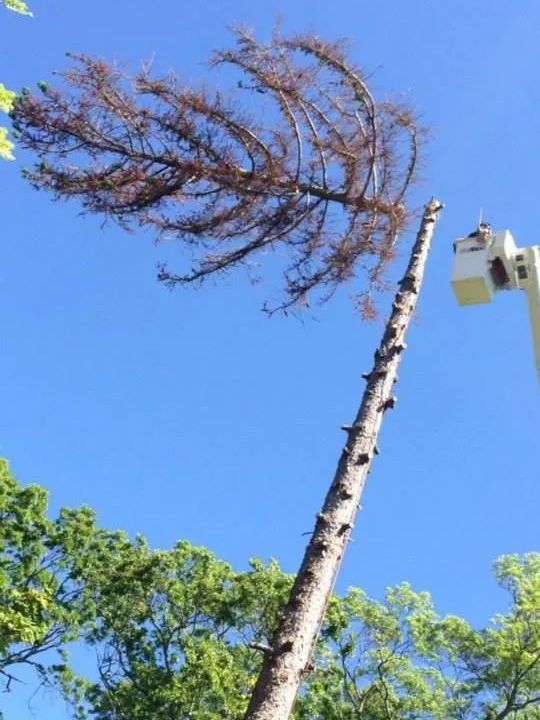
A dead tree in your yard may not seem like an urgent issue, but the longer it remains standing, the greater the risks become. From safety hazards to property damage, dead trees can create serious problems if they’re ignored. Acting quickly to remove them protects your home, your family, and your investment in your landscape. At Tree Health, we provide expert tree removal in the greater Hicksville, NY area. Here are four important reasons to schedule dead tree removal as soon as possible. Protect Your Family’s Safety Dead trees are unstable and unpredictable. Their branches can snap off with little warning, and the entire tree could collapse during strong winds or storms. This poses a direct danger to anyone nearby, including children and pets. Removing a dead tree promptly eliminates this risk and helps ensure that your outdoor space remains a safe environment. Prevent Damage to Property A falling branch or collapsing tree can cause extensive damage to your home, vehicles, fences, or other structures. Even if the tree doesn’t fall completely, heavy limbs can break gutters, shatter windows, or ruin roofing. By removing dead trees before they come down on their own, you protect your property from costly and avoidable damage. Maintain Your Home’s Appearance A dead tree can ruin the beauty of your yard. Its bare branches and decaying bark detract from your home’s curb appeal and make your property look neglected. Whether you plan to stay in your home long-term or are considering selling, removing dead trees helps keep your yard looking well-kept. Stop the Spread of Pests and Disease Dead trees are magnets for pests like termites, beetles, and carpenter ants. Once these insects infest a dead tree, they might move on to healthy trees—or worse, your house. In many cases, disease is what killed the tree in the first place, and if left in place, it can spread to nearby trees. Quick removal helps stop pests and disease from spreading further. Tree Removal in Hicksville, NY When you need tree services in Hicksville, NY and the surrounding area, contact Tree Health at 516-268-3745 . Our local ISA-certified arborists can expertly handle the job. Feel free to give us a call to request an arborist estimate in Hicksville, NY!

Severe weather can wreak havoc on your property, and trees often bear the brunt of that damage. While some storm-damaged trees can recover with proper care and pruning, others pose serious risks and may need to be removed entirely. Making the right call is essential for safety and preventing further property damage. After a major storm, it’s important to inspect your trees carefully and look for signs that removal might be necessary. At Tree Health, our local ISA-certified arborists can identify and safely remove storm-damaged trees that are posing safety risks. Here are four common signs that a storm-damaged tree should be removed. The Tree Has a Severely Split Trunk A tree’s trunk is its main structural support. If the trunk is split or cracked deeply during a storm, the tree is often beyond saving. Large vertical splits can compromise the tree’s stability and increase the risk of it falling. Even if the tree remains standing temporarily, a split trunk leaves it vulnerable to rot and disease, which can accelerate decline and increase the danger of collapse. Major Limbs Have Broken Off While small branches can usually be pruned away after a storm, the loss of large limbs can critically weaken a tree. When the majority of the crown has been damaged or broken off, the tree is more likely to struggle to generate enough energy to survive. In such cases, removing the tree is often the safest option. The Tree Is Uprooted or Leaning Heavily Strong winds and saturated soil can cause trees to tilt or be completely uprooted. A tree that is leaning significantly after a storm may have compromised roots, making it unstable and dangerous. Uprooted trees are especially hazardous because their root systems are no longer securely anchored in the soil. Even if the tree hasn’t fallen yet, the potential for future collapse makes removal necessary. The Tree Is Close to Structures or Power Lines Even if a tree appears salvageable, its location may make it too risky to keep. If a storm-damaged tree is leaning toward your home, garage, or power lines, the threat it poses often outweighs the benefits of trying to save it. In these cases, tree removal is the safest way to protect people and property from potential harm. Tree Removal in Hicksville, NY For expert tree removal in Hicksville, NY and the surrounding area, contact Tree Health at 516-268-3745 . Feel free to give us a call to arrange an arborist estimate in Hicksville, NY!
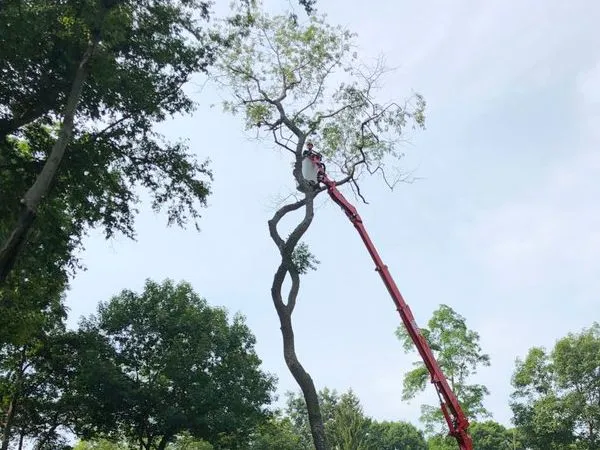
Tree pruning is a key part of maintaining a healthy and attractive landscape, but it’s a task that requires knowledge, experience, and precision. Hiring an ISA-certified arborist ensures that your trees are cared for by someone who is trained in proper pruning techniques and understands the science behind keeping trees healthy. At Tree Health, our local ISA-certified arborists provide expert tree pruning in the greater Hicksville, NY area. Here are four benefits of trusting a certified professional to prune your trees. Promotes Long-Term Tree Health ISA-certified arborists are trained to identify which branches should be removed to encourage healthy growth and prevent disease. They understand how different species respond to pruning and tailor their approach accordingly. By using proper techniques, certified arborists reduce the risk of shock, decay, or damage that can result from incorrect cuts. Their goal is to support the long-term vitality of the tree, not just make it look better in the short term. Enhances Safety Around Your Property Dead, weak, or overhanging limbs can pose serious hazards, especially during storms or high winds. A certified arborist can spot these issues early and safely remove problematic branches before they fall and cause damage or injury. Because they follow established safety protocols and use professional equipment, ISA-certified arborists complete pruning tasks with minimal risk to themselves, your property, or the tree. Improves Tree Structure and Appearance Proper pruning enhances the shape, balance, and structural integrity of a tree. Certified arborists are trained to make cuts that encourage strong branch development and maintain a tree’s natural form. This not only makes the tree more aesthetically pleasing, but also reduces the likelihood of future structural problems. Their work can transform an overgrown or uneven tree into a beautiful focal point in your landscape. Prevents and Manages Disease Tree pruning can play a vital role in preventing the spread of disease. An ISA-certified arborist knows how to identify signs of infection or infestation and will remove affected limbs with care. They also follow best practices to avoid introducing disease through contaminated tools or poor pruning habits. With their help, you can catch problems early and take proactive steps to protect your trees. Professional Tree Pruning in Hicksville, NY When you need tree services in Hicksville, NY and the surrounding area, contact Tree Health at 516-268-3745 . Feel free to give us a call to ask for an arborist estimate in Hicksville, NY!
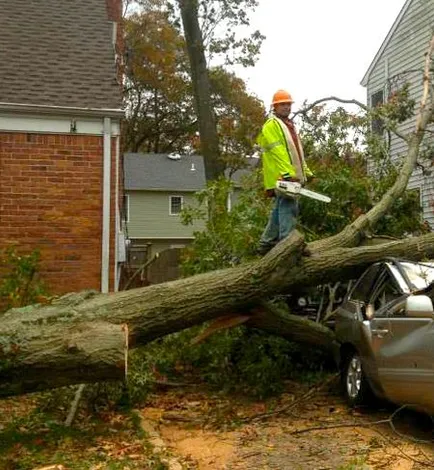
When trees become unstable or unhealthy, they can quickly turn into dangerous liabilities. A tree that poses a risk to people, structures, or nearby utility lines should be addressed before it causes serious damage. Being able to recognize the warning signs of a hazardous tree can help you take action before it’s too late. At Tree Health, our local ISA-certified arborists provide hazardous tree removal in the greater Hicksville, NY area. Here are five signs that a tree on your property may be creating a safety threat. Large Dead Branches One of the clearest signs of a hazardous tree is the presence of large dead or hanging branches. These limbs can fall without warning, especially during high winds or storms. If a tree has multiple dead branches or limbs that appear cracked or weak, it’s a clear sign that the tree is compromised. Falling branches can cause injury or property damage, so it’s best to have them removed by a professional as soon as possible. Noticeable Leaning While some trees naturally grow at a slight angle, a sudden or increasing lean can indicate structural instability. If a tree begins leaning more than usual, it may be due to root damage or soil erosion. This type of instability means the tree is more likely to fall, particularly during storms. Leaning trees near homes, driveways, or power lines are especially concerning and should be inspected immediately. Cracks or Splits in the Trunk The trunk is the main support structure of a tree, and any signs of splitting, cracking, or cavities could signal internal decay. These types of structural issues often go unnoticed until it’s too late, so early detection and evaluation by a certified arborist are critical. Exposed or Damaged Roots Roots play a crucial role in anchoring a tree and providing nutrients. If you notice that a tree’s roots are exposed, cracked, or rotting, it could mean the tree is no longer securely anchored. Root damage is particularly concerning because it undermines the tree’s stability from the ground up. Trees with compromised root systems are often at high risk of toppling. Proximity to Structures or Power Lines Even a healthy tree can pose a safety risk if it grows too close to a building or utility line. Branches that overhang roofs or brush against power lines can cause property damage or create electrical hazards. Trees that are too close to structures may also interfere with foundations or drainage systems. Tree Removal in Hicksville, NY When you need tree services in Hicksville, NY and the surrounding area, contact Tree Health at 516-268-3745 . Feel free to give us a call to arrange an arborist estimate in Hicksville, NY!
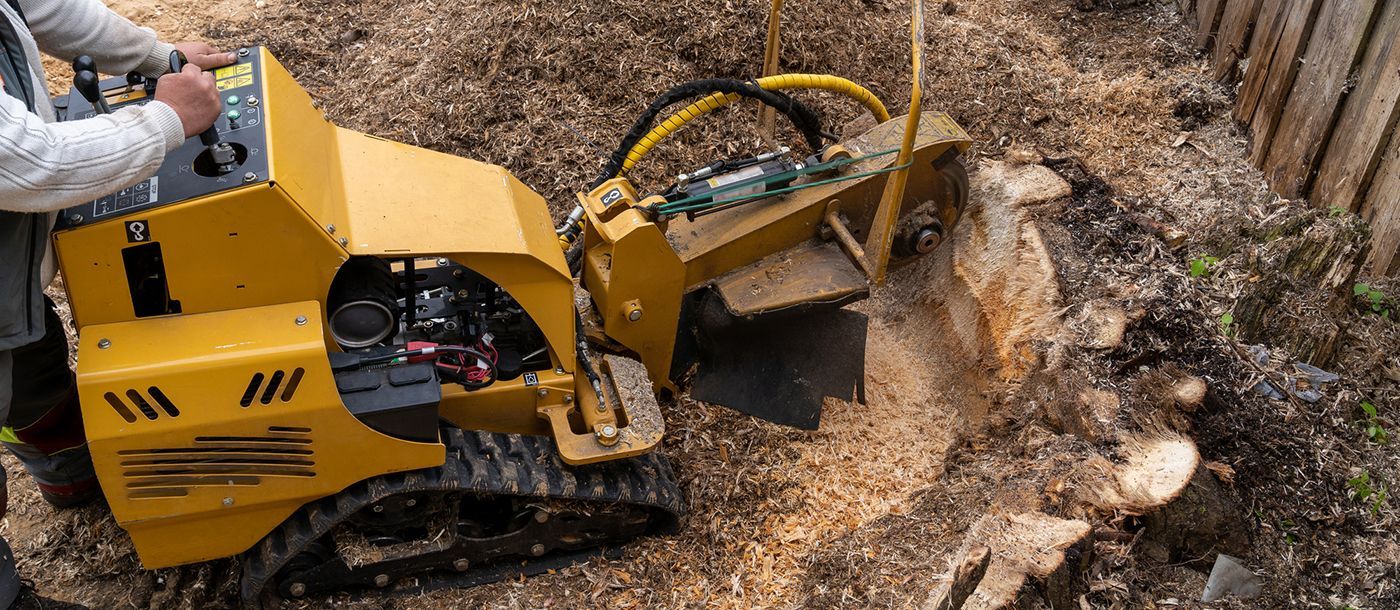
After having a tree removed, it might seem harmless to leave the stump behind. However, over time, that leftover stump can cause a range of problems that affect both the safety and appearance of your yard. Removing tree stumps promptly is an important step in maintaining a healthy and attractive landscape. At Tree Health, we provide top-quality stump grinding and removal in the greater Hicksville, NY area. Here are five reasons why you should remove stumps as soon as possible. Stumps Can Be a Safety Hazard Tree stumps pose a real tripping hazard, especially for children and visitors. If someone accidentally trips over a stump on your property, it could result in injuries and potential liability. Stumps can also damage lawn equipment if not seen in time, leading to costly repairs. Removing the stump helps prevent accidents and keeps your yard safer for everyone who spends time there. They Attract Unwanted Pests An old tree stump can become a magnet for pests such as termites, ants, and other wood-boring insects. Once these pests move into the rotting wood, they may start to spread to healthy plants, trees, or even your home. Over time, the decaying stump becomes an ideal breeding ground for infestations that are difficult and expensive to eliminate. By removing the stump, you reduce the risk of inviting unwanted bugs into your yard. Stumps Can Cause New Tree Growth Tree stumps may continue to sprout new shoots, leading to unwanted and unsightly growth around the base. These sprouts can be persistent and tough to control, often requiring repeated cutting. Removing the stump entirely helps ensure the tree doesn’t make an unwanted comeback. They Take Up Valuable Space A stump in the middle of your yard can get in the way of future landscaping projects or simply limit your outdoor space. Whether you're dreaming of a new garden bed, a patio, or a play area for your kids, a stump can be a major obstacle. By getting rid of it, you open up space that can be put to better use. They Detract from Curb Appeal No matter how well-maintained your landscaping is, an old stump can be an eyesore. It disrupts the flow of your yard and gives the impression of unfinished work. If you’re planning to sell your home or just want a cleaner look, removing tree stumps can instantly boost your property's curb appeal and make your yard look more inviting. Stump Grinding & Removal in Hicksville, NY When you need tree services in Hicksville, NY and the surrounding area, contact Tree Health at 516-268-3745 . Feel free to give us a call to arrange an arborist estimate in Hicksville, NY!

Trees bring environmental benefits to your property, but when a tree dies, it can become a serious safety hazard. A dead tree is at risk of falling, which can cause property damage and serious injuries. If you suspect that a tree on your property may be dead, it’s crucial to recognize the warning signs and alert the arborist. At Tree Health, we provide expert tree removal in the greater Hicksville, NY area. Here are five signs that a tree is no longer alive. Brittle or Peeling Bark When a tree dies, the bark often becomes dry, brittle, and starts peeling away in large chunks. You may also notice deep cracks or splits in the trunk, which indicate structural weakness. If you scrape away a small section of bark and find dry tissue instead of a moist, green layer, it’s a sign that the tree is no longer alive. Lack of Leaves A tree that fails to produce leaves during the growing season is likely dead or dying. Deciduous trees should sprout new leaves in the spring, while evergreens should maintain their green needles year-round. If a tree has bare branches during the warm months or its leaves are withering and turning brown out of season, it may no longer be alive. Large Dead Branches Another clear sign of a dead tree is the presence of numerous dead or broken branches. If a tree has large sections of its canopy that are bare, it may be beyond saving. You can test the health of a branch by bending a smaller twig. If it snaps easily and lacks any green tissue inside, the tree is likely dead. A Leaning Trunk and Unstable Base A tree that has started to lean significantly is often a sign of internal decay or root failure. While some trees naturally grow at an angle, a sudden or worsening lean is cause for concern. Dead trees lose their structural integrity, making them more prone to toppling over, especially during storms or high winds. Exposed or Decaying Roots The health of a tree starts at its roots, and if the root system is badly compromised, the tree is unlikely to survive. Exposed roots, especially those that appear rotting or covered in fungi, are a strong indication that the tree is dead or in severe decline. Tree Removal in Hicksville, NY When you need tree services in Hicksville, NY and the surrounding area, contact Tree Health at 516-268-3745 . Feel free to give us a call to request an arborist estimate in Hicksville, NY!
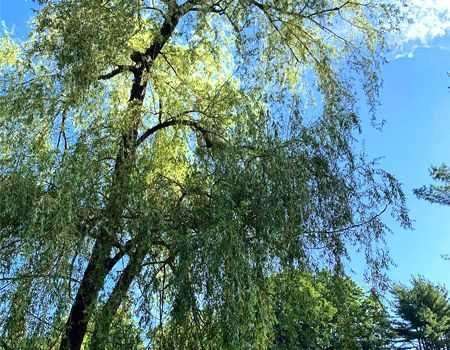
Tree cabling and bracing is a critical technique used to support and stabilize trees, helping them withstand heavy winds, storms, and the effects of aging. At Tree Health, we often receive questions about these methods from homeowners and business owners in Hicksville and throughout Long Island. Below, we’ve answered some of the most common questions about tree cabling and bracing to help you better understand how these services can protect your trees and property. What is tree cabling and bracing? Tree cabling and bracing involve the use of high-strength cables and support rods to reinforce weak or damaged trees. Cabling is typically used to reduce stress on branches or limbs by redistributing weight, while bracing involves installing steel rods to stabilize splits or cracks in the trunk. These methods help prevent structural failure and prolong the life of the tree. How do I know if my tree needs cabling or bracing? If you notice large, heavy branches growing at unusual angles, multiple trunks that appear weakly attached, or visible cracks in the trunk, your tree may need additional support. A professional arborist can assess the structure of the tree and determine if cabling or bracing is the right solution. Does tree cabling harm the tree? No, when done correctly by a trained arborist, cabling and bracing do not harm the tree. Instead, they provide support to weak areas, allowing the tree to grow stronger and reducing the risk of limb failure. Over time, these methods can actually extend the lifespan of the tree. Can cabling and bracing prevent a tree from falling? While cabling and bracing can significantly reduce the risk of falling limbs and structural failure, they cannot guarantee that a tree will never fall. If a tree is severely damaged, diseased, or unstable, removal may be the safer option. An arborist can evaluate the tree and recommend the best course of action. If you’re concerned about the safety or stability of a tree on your property, Tree Health is here to help. Our ISA Certified Arborists provide expert assessments and professional cabling and bracing in Hicksville and throughout Central Long Island. Give our local arborists on Long Island a call at 516-268-3745 to schedule a consultation and ensure your trees remain strong and secure for years to come.





